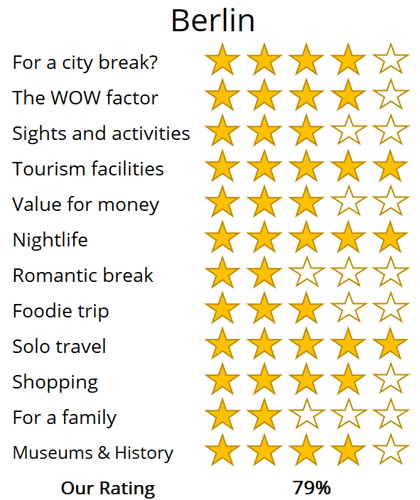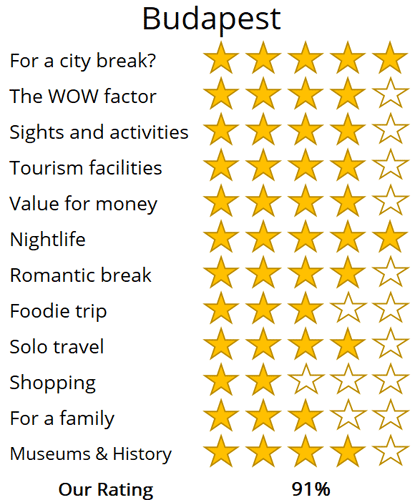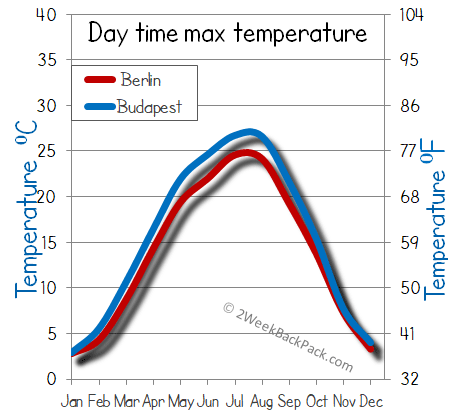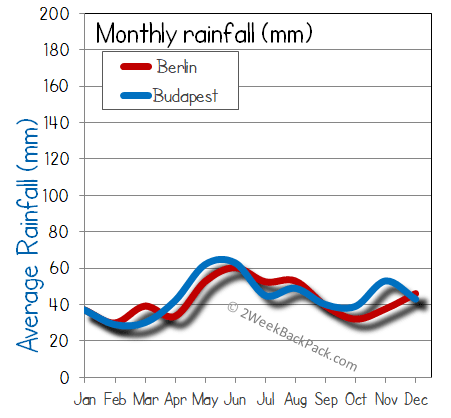WhereToGoForMyHoliday.com
The best destination comparison site!
WhereToGoForMyHoliday.com
The best destination comparison site!
Berlin or Budapest, which is better for your holiday in 2024?
Berlin and Budapest both offer unique and enticing experiences, but which one should you choose for your city break or holiday?
We recognise the difficulty in making this decision. While there is abundant information available on both destinations, clear guidance on which city better aligns with your travel preferences is often hard to find.
This article aims to provide an impartial comparison of Budapest and Berlin, and hopefully help you to choose the best city to visit.
The article is structured into several sections, each of which can be directly accessed through the following links:
• Introduction to the cities
• Scores and ratings
• Which one should I, friends, or family visit?
• When to visit and weather
• Who is the city suited for?
• The perfect 48hours (with map)
• Tourism details (where to stay? airport details?)
Introduction to Berlin and Budapest
Berlin is a city of thrilling contradictions. Traces of its turbulent past - fragments of the Berlin Wall, stark WWII monuments - remain visible. Yet gritty street art and highbrow museums coexist with beach bars and underground clubs in this dynamic, multicultural capital.
This dynamic city seamlessly fuses new and old, with leafy parks neighbouring modernist architecture and historic boulevards lined with cutting-edge galleries. Cosmopolitan yet complex, Berlin rewards those eager to delve beneath its myriad cultural layers.
Straddling the snaking Danube in the very heart of Europe is Budapest, the buzzing capital of Hungary.
Here, a city of two halves – Buda and Pest – unites to form a complex tapestry of over 1.7 million lives. With grand 19th-century bridges stitching together the landscape, Budapest entices with its blend of storied history, striking architecture, café charm, and lively nightspots.
Whether your eyes are drawn to the regal palaces atop Buda Hill or the heady aroma of sulphur from steaming bathhouses, Budapest never ceases to captivate. Venture into ruin bars, gaze upon the monumental Dohány Street Synagogue, or stroll the wide boulevards left behind by the Communist era.
In Budapest, every glance reveals a new layer of intrigue, a city where the past and present are locked in an endless dance.
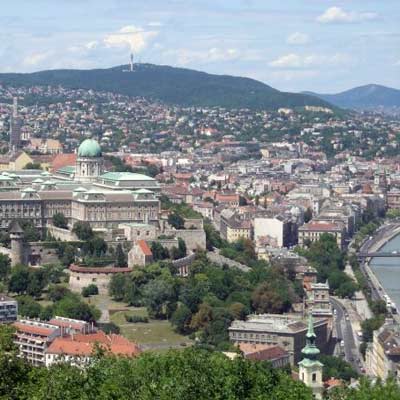
Budapest is a vibrant and modern city just waiting to be explored

The TV tower (Berliner Fernsehturm) at Alexanderplat dominates the skyline of Berlin
High-level summary Berlin and Budapest
Summary
Where would I journey for a personal escape?
Budapest
Where would I send my parents for a memorable visit?
Budapest
Where's the ideal destination for my adventurous 19-year-old cousin?
Berlin
Where should my food-obsessed friend indulge their culinary passions?
Budapest
Note: The above comparisons are weather-independent and are based on travel during the most opportune times of the year. Details about the ideal travel seasons are elaborated upon later in this article.
In the sections that follow, you'll find a comprehensive comparison between these two fascinating cities. This includes recommendations on the duration of stay, the best times to visit, and tailored 48-hour itineraries for each city.
The final segment delves into practicalities for your travels, such as the best airport to fly into, the optimal districts for your accommodation, and insider tips, for when you come to explore the city.
We hope that you find all of this information useful, in planning your next exciting trip!
Destination details
How long to spend each city?
Fly-in visits for three days are enough to check off the major must-see sights of Budapest. This is a compact capital with good underground and bus links. You can get easily get across town – going from Buda Castle on one side of the city all the way to the Széchenyi Thermal Baths at the other takes less than an hour on public transport.
That said, Budapest has plenty of hidden secrets up its sleeve. You could easily while away a whole week enjoying cheap happy hours in the ruin bars, bathing in the Art Deco spas, and visiting islands up the Danube. If you're coming in summer, you could also extend a stay to include the art galleries and cobbled lanes of Szentendre, the mineral-rich waters of Lake Balaton, and the rustic Tokaj wine country to the east.
Berlin is one of those vibrant metropolises that always seems to have something new to discover on each visit.
You could easily spend months here and not do everything you want. That's really a result of just how big it is – more than 3.5 million people call it home, and it's the largest city in Germany by a long shot.
That said, a weekend or a three-day break is often ample for a whirlwind tour of the capital's most iconic points of interest.
The ultra-efficient U-Bahn, tram and buses make it easy to hop around the city, and fortunately, the main attractions are relatively close together; woven into the blocks of Mitte, Wedding and hipster East Central.
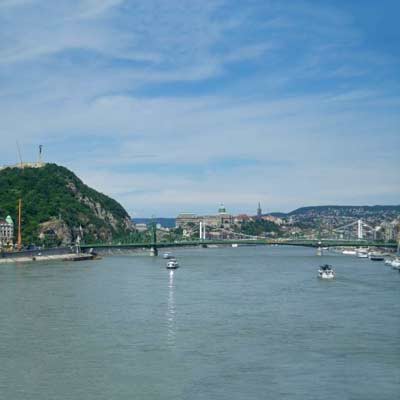
The mighty Danube River cuts Budapest in two

Berlin is a city that lives for it’s nightlife……
It's simple: Spring to summer for Berlin.
From May to October, the locals of Berlin seem to come out of their winter hibernation, and the city is in full swing. However, in the summer expect high temperatures where the mid-day heat can easy be over 30C.
If you can handle the cold, snow and greyness, then Berlin is almost free of tourists in the winter. December in Berlin is rewarding, with enchanting Christmas markets at the Charlottenburg Palace and on Alexanderplatz.
Late spring and early autumn are when locals often say Budapest is at its best. Temperatures average around 23-25 degrees in May and September. There's not an overload of rain then either. And it's perfect for avoiding the crowds of midsummer city breakers that come during the European holidays.
There's also something to be said for visiting Budapest in the midst of winter. Mercury plummets between November and March, and it's not uncommon to see the Danube freeze over with huge chunks of ice. What's more, the tenements and side streets of the Jewish Quarter and the historic Inner City areas ooze atmosphere on cold, snowy days. Just be sure to pack the thermals!
Budapest, with its rich historical culture, intertwined seamlessly with an energetic nightlife, has established it as a top destination for a diverse range of travellers. Backpackers gravitate towards the Jewish Quarter's unique ruin bars, where they can indulge in exceptionally affordable Hungarian beers amidst eclectic courtyards.
Meanwhile, those with a cultural focus may choose to delve into the history of the Hungarian empire at Buda Castle or pay homage at the poignant House of Terror museum, which delves into the oppressive Stasi era.
However, if your preference leans towards sun-soaked beaches, Budapest might not feel like a perfect fit. Situated in a landlocked region, both the city and the country are devoid of coastline. Furthermore, while there are parks, they are predominantly located on the city's periphery, making Budapest predominantly an urban experience.
If you're a city slicker with a soft spot for cool cafes (aka the coolest in Europe), great coffee, ethnic eateries, and urban vibes, then Berlin is arguably the place you should be for the rest of your life!
This is the epitome of a metropolis made up of individual neighbourhoods. Each has crafted its own unique character; some are hedonistic, others laid back and easy going, others packed with famous landmarks.
Those who want fresh air can escape to the Tiergarten and the beautiful Spreewald, but those are just supporting acts to the buzz of the downtown. It's not the place to be to attune yourself to nature, relax under the sun, or have swims in the sea.

The Bode Museum standing on the banks of the Spree River on the Museum Island (Museumsinsel), the cultural centre of Berlin
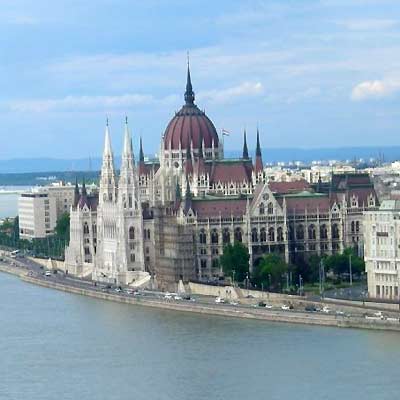
The Hungarian Parliament stands as a stunning testament to Budapest's architectural grandeur, holding the title of the city's tallest building
48hours in Budapest
Day 1: Begin your journey on the Pest side of the city, where the magnificent Dohány Street Synagogue resides. This landmark is not only pivotal to Budapest but also stands as the largest synagogue in Europe. Following this, take a stroll along Andrássy Avenue, a grand boulevard and UNESCO World Heritage site, adorned with Neo-Classical mansions.
Delve into Hungary’s tumultuous history with a visit to the House of Terror museum, situated at one end of the avenue. Subsequently, unwind with a spa session at the renowned Széchenyi Baths, celebrated for its Art Deco architecture. Cap off the day with a hearty dinner at Gettó Gulyás, indulging in their signature paprika-smoked goulash, and conclude your evening with a drink at Szimpla Kert, a mesmerizing art gallery turned bar.
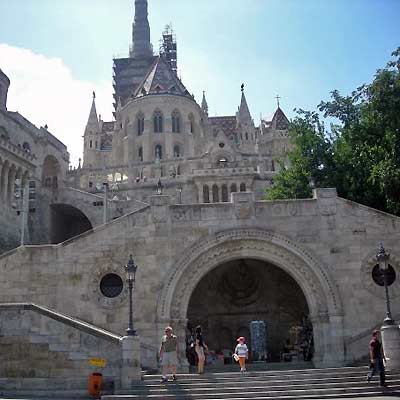
Pest cathedral
Day 2: Start your day with breakfast at the historic Central Market Hall, established in 1897. Savour the taste of sweet Hungarian pastries before crossing the Danube via the striking Liberty Bridge.
Upon arrival, you have the option to visit the elegant Gellért Baths or continue your journey to the Fisherman's Bastion and the Citadella, former military strongholds that now offer breathtaking views of the Danube. A northward stroll leads you to the Castle District, where you can either admire the architecture from the outside or explore the regal court rooms inside.
Don’t miss the chance to capture some photos of the imposing Hungarian Parliament Building across the river. Conclude your day with dinner in the Inner City of Pest, offering a diverse range of dining options from Tex-Mex restaurants to atmospheric 1930s speakeasies.

Gellért Hill offers some of the best views of Budapest, the hill is named after Saint Gerard who was murdered in 1065 by being put in a barrel and rolled down the hill…
48hours in Berlin
Does the perfect 48 hours in Berlin even exist? With so many museums and vibey neighbourhoods to get through, it's hard to pack the highlights of the German capital into just two days. Still, the Berlin itinerary below gives it a go, offering everything from ancient Greek artefacts to cool pavement drinkeries and more.
Day 1: Morning in Mitte. As its name implies (Mitte = Middle), it's the hub of Berlin. You can settle in for a refined breakfast in the hidden courtyards of the Hackescher Höfe. The area is brimming with independent boutique stores and elegant tearooms. A few steps to the south take you beneath the needle-like Berliner Fernsehturm. A relic of Communist times, it's home to the fastest elevators in the world, while the lookouts at the top have jaw-dropping panoramas of the city (tickets cost €16.50).
A quick people-watching session on bustling Alexanderplatz and then move west to Museum Island. Culture vultures should take their time here. The Pergamonmuseum is a real highlight, with its priceless Assyrian statues and even the blue-tiled gates of Babylon. A pitstop at the nearby German Historical Museum is one for those who want to unravel the tale of the nation, with particular highlights in the collections that chronicle the world wars of the 20th century.
From there, walk down Unter den Linden to encounter the main artery of Mitte. That takes you to the world-famous Brandenburg Gate, which stands next to the glass-domed Reichstag Building. A picnic lunch in the Tiergarten park can be followed by a sobering walk through the Memorial to the Murdered Jews of Europe. Past that is Checkpoint Charlie – a onetime gateway between East and West Berlin – and then the lively streets of Kreuzberg, with their ramen restaurants, jazz bars, and multicultural kitchens.

The mock gothic Oberbaum Bridge connects the eastern and western sides of Berlin and is prominent icon of the city’s unity.
Day 2: If you're lucky enough to escape a hangover courtesy of the Kreuzberg bars, then an early morning start in the area of Friedrichshain is in order. It's brimming with graffiti-scrawled coffee bars and breakfast joints.
On the south side of the district is the striking East Side Gallery. Once a bland concrete section of the Berlin Wall, it's now an artist's homage to the fall of the great divider in 1989. From there, go north to the green lawns of Volkspark Friedrichshain. Chilled and leafy, it's actually the oldest public garden in the capital. And it's got monuments to the Spanish Civil War next to volleyball courts and picnic tables.
Hugging that is the enchanting area of Prenzlauer Berg. This is the perfect place to end your 48 hours. It's not bursting with sights and attractions, but it's got a classic Berliner neighbourhood vibe. If you're unsure where to begin, check out Kulturbrauerei – an all-in-one complex of cinemas, theatres, clubs and beer halls.

The Victory Column stands at the centre of Tiergarten Park, and at the viewing platform 285 steps up provides some of the finest views over Berlin
If you're arriving on a low-cost airline to Berlin, then it's likely you'll jet into the old GDR hub of Schönefeld Airport. That's in south-east Berlin. Reach it on regional train lines or via the S-Bahn, which go directly to a station in front of the terminals. Tickets cost €3.40 each way.
The larger Tegel International Airport is where most premium carriers like Lufthansa and BA will land. If you're going there, you certainly don't want to take the train to Tegel – that won't get you into the heart of Berlin. Instead, choose the frequent bus link to Hauptbahnhof or Alexanderplatz. The fare is €2.80 € and journeys take between 35-50 minutes depending on traffic.

The Berliner Dom cathedral, with its 100m high dome and grand Neo-Renaissance architecture
Getting around Berlin is a cinch. The capital has a super-efficient and well-linked public network of trams, trains and underground lines. You can purchase tickets at any S-Bahn or U-Bahn station, or at any establishment with a BVG sign. Daily and weekly passes for all public transportation are also available with slight reductions. A new smartphone app allows digital purchasing of tickets (search: FahrInfo Plus). All other tickets must be validated before use.
Violence of any sort in the capital is rare and police can be relied upon. Still, have your wits about you, especially if travelling through Berlin's lesser-known or rougher areas, like the ones bordering Kreuzberg, or the nightlife hubs of Alexanderplatz and Friedrichshain.
When it comes to searching for a hotel, there's a hard choice to be made. There are oodles of neighbourhoods here that are worthy of attention. It's really up to you to decide what you want. Generally speaking: Sightseers can't go wrong in Mitte, Kreuzberg and Friedrichshain are perfect for bar hoppers and foodies, and Neukölln offers something more local.
Travelling to and around Budapest is super easy. There's an efficient underground network. Tickets for that cost 350 HUF per ride with a single transfer allowed. You can also use river boats (HUF750 per journey) and buses (350 HUF).
Taxis are rarely needed, but they are cheap, costing 280 HUF per kilometer. Be sure to insist your driver puts the meter on, and never accept offers from taxi touts at the airport.

The Fisherman's Bastion, Budapest
Talking of the airport, Budapest Airport sits around 22 kilometers from the city center. You can get to and from the terminals using the dedicated express bus (€2) or by train (€2.70). Both options take between 30-40 minutes. Be sure to buy tickets at machines by the stops – they're more expensive when purchased direct from drivers.
When it comes to picking hotels in Budapest, you're best off focussing on the Pest side of the city. That's where the bulk of the best lodgings are located. Being in the Jewish Quarter can be noisy, but perfect if you want to hit the nightlife of Szimpla and the other ruin bars. The Inner City area is charming and quieter, with some boutique options. Meanwhile, Újlipótváros is a local's favourite, with its cool cafés and art galleries and sleek Airbnbs.
Related articles: Where to stay in Budapest
Budapest is largely safe and crime statistics are in line with European norms. Some well-known scams include taxi drivers who overcharge and sellers of fake goods. Pickpocketing is also a rare but real problem. Just be aware of your personal possessions and be vigilante, especially when on public transportation.
Price wise, Budapest is surely up there with the cheapest of European capitals. A large beer can cost as little as 500 HUF (€1.50). Food in a midrange restaurant will set you back between 2,000 HUF and 3,000 HUF (€6-9). Nights in hotels are noticeably less than in nearby Vienna, too.
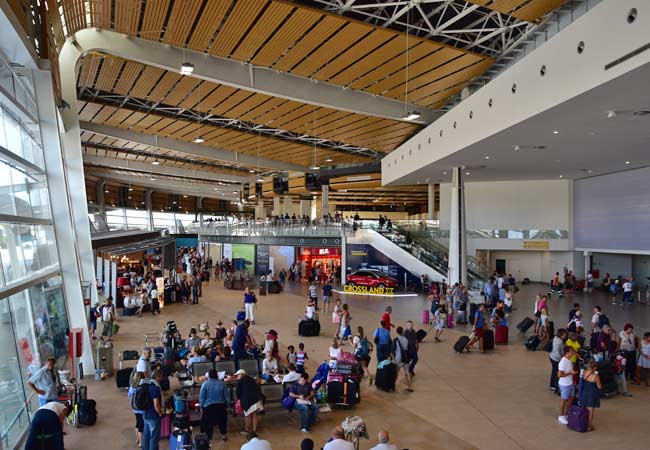
oh we were stuck in the airport!

Copenhagen was a bit expensive...

All we did was drink beer in Brussels...
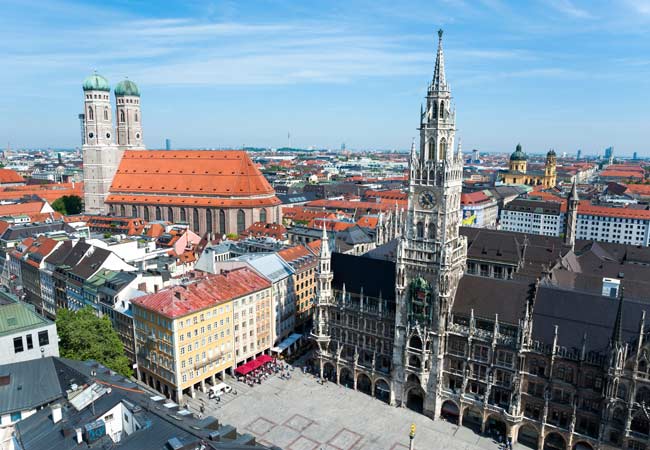
Muncih was crazy
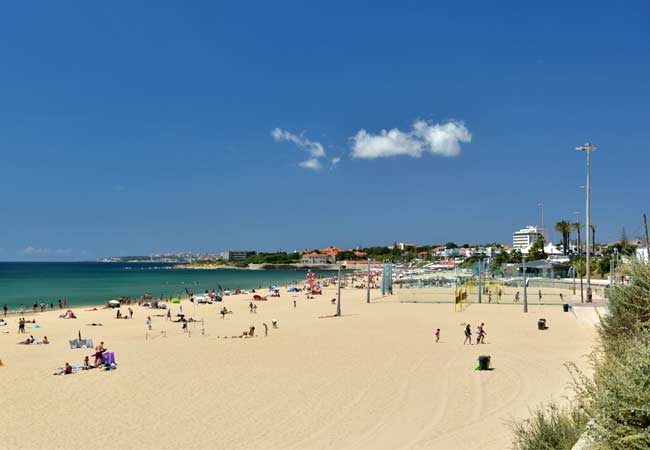
And we got so burnt!
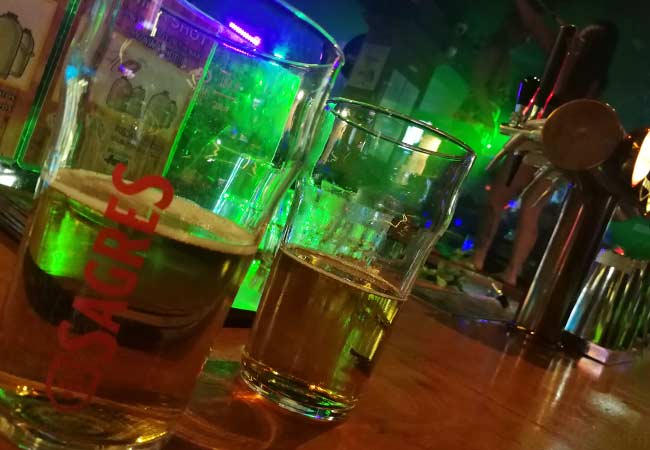
Remeber that night in Rome

oh we were stuck in the airport
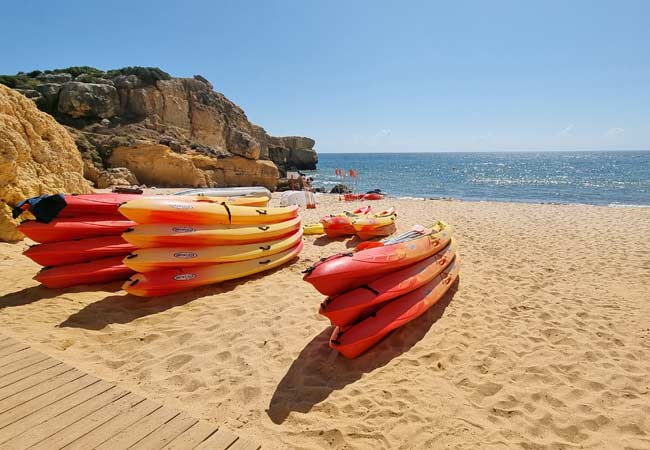
So much fun kayaking

Berlin and that group from Austria!

There was such a view from that church

And we got so burnt!

Munich was eventful, wasn't it!

Such a view from that cathedral in Florence
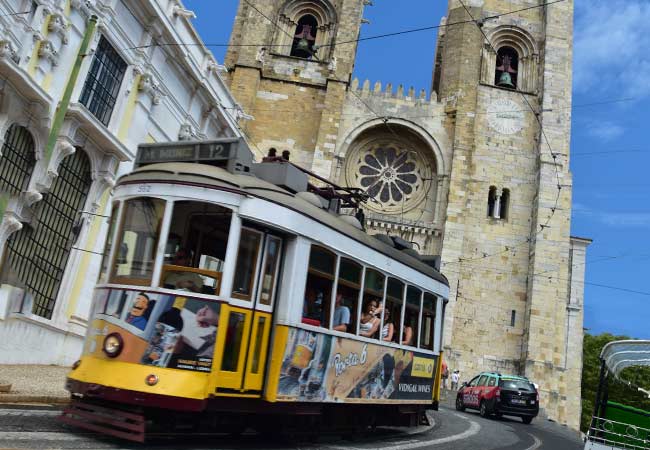
Lisbon was such so much fun

Last summer was so much fun .... x

Remeber that night in Rome

Lisbon was such so much fun

Such a view from that cathedral in Florence

Munich was eventful, wasn't it!

And we got so burnt!

Remeber that night in Rome

All we did was drink beer in Brussels...

Berlin and that group from Austria!

Can't wait to go back to Dubrovnik

Remember that boat ride in Prague

Copenhagen was a bit expensive...
